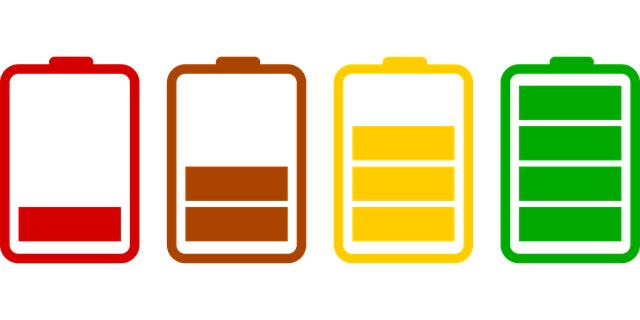- Introduction
- How Solid-State Batteries Work
- Advantages of Solid-State Batteries
- Challenges and Disadvantages of Solid-State Batteries
- Applications and Future of Solid-State Batteries
- Conclusion
- FAQs
- References
Introduction
As clean energy solutions continue to advance, solid-state batteries are being hailed as the future of energy storage technology. In this article, we will delve deep into various aspects of this groundbreaking innovation including its functionality, benefits, current challenges, potential applications, and the future outlook. With this comprehensive guide in hand, you'll gain a clear understanding of why this battery technology could revolutionize industries from electric vehicles to renewable energy and consumer electronics.
We'll start by learning how solid-state batteries differ from conventional lithium-ion batteries. Next, we’ll explore the reasons these batteries offer so many advantages such as higher energy density, safety improvements, and faster charging times. We'll also discuss some of the hurdles developers need to overcome before solid-state batteries can become a widespread technology. Lastly, we’ll take a look at the future of solid-state batteries, their applications across industries, and how they will impact the global transition toward sustainable technology.
How Solid-State Batteries Work

(Image: Pixabay/@sergiumarvel)
At the heart of any solid-state battery is a core difference from traditional lithium-ion cells: the replacement of liquid or gel electrolytes with solid electrolytes. In a conventional lithium-ion battery, ions move between the positive and negative electrodes through a liquid electrolyte, which can pose issues of leakage, overheating, or even fire under certain conditions. In contrast, solid-state batteries utilize solid materials like ceramics, glass, or specialized polymers as electrolytes.
This fundamental shift leads to several key advantages. Since solids are more stable than liquids, they can withstand higher temperatures and function better under stress. This makes the batteries safer, less prone to leakage, and capable of delivering power more efficiently. Additionally, solid electrolytes allow manufacturers to use lithium metal for anodes, which significantly increases the battery’s energy density.
However, as promising as this technology is, the solid electrolytes used in these batteries have their challenges. Ensuring ionic conductivity within a solid medium as opposed to a fluid is one of the crucial technical barriers. Research is ongoing to fine-tune these materials to maximize their conductivity while maintaining costs and scalability.
Many believe that solid-state batteries will drive the next wave of compact and efficient energy storage devices, particularly in industries like electric vehicles (EVs). But before that can happen, a few more hurdles must be cleared, as we will discuss in later sections.
Advantages of Solid-State Batteries

(Image: Pixabay/@Dreamer21)
The appeal of solid-state batteries lies in their multiple advantages over conventional lithium-ion ones. Let's take a closer look at the key benefits that make them stand out as the go-to option for the future of energy storage:
1. Higher Energy Density: As previously mentioned, replacing liquid electrolytes with solid-state alternatives allows the use of lithium metal as an anode, substantially increasing the battery’s energy density. This means solid-state batteries can store more energy within the same volume when compared to their traditional counterparts. For electric vehicles, this translates to longer ranges without increasing battery size.
2. Improved Safety: One of the most significant issues with liquid electrolytes is the risk of leakage, thermal runaways, and fires due to volatility under certain conditions. Solid-state batteries eliminate these risks since their solid electrolytes are far more stable, greatly reducing the possibility of malfunction and overheating.
3. Longer Lifespan: Solid-state batteries exhibit less wear and tear than lithium-ion batteries, especially when charged and discharged frequently. This contributes to a longer lifespan and greater efficiency over time, which is critically important for high-demand applications like electric cars or grid storage.
4. Faster Charging Times: A major upscale of solid-state battery technology is its potential to reduce charging times dramatically due to its higher electrical conductivity. Imagine charging your electric vehicle in minutes instead of hours – that's one of the game-changing possibilities associated with solid-state technology.
Challenges and Disadvantages of Solid-State Batteries

(Image: Pixabay/@michaljamro)
Although solid-state batteries hold immense promise, the road to commercial implementation faces obstacles. Let’s explore the key challenges and disadvantages currently impeding the mass adoption of this technology:
1. High Manufacturing Costs: One of the primary challenges with solid-state battery technology is its cost. The materials required for solid electrolytes, especially those made from ceramics or other cutting-edge compounds, are expensive to produce. Moreover, the manufacturing processes needed to handle and integrate solid electrolytes into battery cells are still in early stages, lacking efficiency at an industrial scale.
2. Scalability: While laboratory prototypes of solid-state batteries have been successful, scaling them up to the mass production level is another story. The production techniques for thin layers of solid electrolytes are complex and delicate, resulting in slow manufacturing speeds and significant capital investments. Researchers seek scalable methods to produce these batteries without sacrificing quality or consistency, but progress remains slow.
3. Ionic Conductivity Issues: Solid-state batteries require high ionic conductivity to function well. Unfortunately, not all solid electrolytes offer sufficient ionic movement compared to their liquid counterparts. To enable faster, more efficient ion transfer, new materials must be developed to overcome this barrier without compromising other properties such as longevity or cost-efficiency
4. Durability and Mechanical Stress: Solid electrolytes are prone to cracking under mechanical stresses such as charge/discharge cycles, temperature fluctuations, or even physical pressure. These cracks can lead to malfunctions or capacity degradation, compromising safety and performance. Researchers are working on innovative solutions to make solid electrolytes more durable.
Applications and Future of Solid-State Batteries

(Image: Pixabay/@StockSnap)
The potential applications for solid-state batteries are vast as they continue to evolve. Today, the most anticipated application is in the electric vehicle (EV) market. Companies such as Toyota, BMW, and QuantumScape are heavily investing in this developing technology with the goal of creating longer-lasting, quickly rechargeable, and more energy-efficient batteries. If solid-state batteries in EVs become a reality, it could significantly accelerate the shift towards electric mobility worldwide.
Apart from transportation, portable electronics such as smartphones, laptops, and wearable devices are also expected to benefit from miniaturized versions of these batteries. Solid-state batteries offer faster charging, improved battery life, and decreased physical space requirements, making them ideal for high-performance computing devices.
Another promising area for solid-state batteries is grid-level energy storage. As renewable energy generation (such as wind and solar) becomes a primary focus globally, the enhanced safety and capacity of solid-state batteries make them ideal for big-scale energy storage systems. They could play a key role in stabilizing electricity grids reliant on intermittent renewable energy sources.
While the timeline for mass commercialization is still uncertain, most experts estimate we could see solid-state batteries outperforming traditional systems by the late 2020s or early 2030s. Investments in research and technological breakthroughs will fine-tune this technology, ensuring more affordable and scalable solutions in the near future.
Conclusion
Solid-state batteries have immense potential to redefine how we store and use energy across various industries. From safer electric cars with longer ranges to fast-charging, longer-lived electronics and even large-scale renewable energy storage, solid-state technology promises a more sustainable and efficient energy future. Despite the challenges surrounding cost, scalability, and durability, continuous advancements in research are bringing us ever closer to realizing the full potential of solid-state batteries.
If researchers can successfully resolve these issues, solid-state batteries will undoubtedly play a critical role in powering the technological advancements of tomorrow.
FAQs
What is the main difference between solid-state batteries and lithium-ion batteries?
The main difference lies in the type of electrolyte used. Solid-state batteries replace the liquid or gel electrolyte found in lithium-ion batteries with a solid electrolyte, which offers improved safety, higher energy density, and longer battery life.
How long do solid-state batteries last compared to traditional ones?
Solid-state batteries generally have a longer lifespan because they are less prone to wear and tear during charge/discharge cycles. They also reduce risks like leakage, making them more durable than conventional lithium-ion batteries.
Are solid-state batteries safer?
Yes, solid-state batteries are considered much safer than lithium-ion batteries because their solid electrolytes are far less prone to leaks, overheating, or thermal runaways, which can cause fires.
When will solid-state batteries be commercially available?
While there are ongoing trials and small-scale implementations, it is predicted that solid-state batteries will become widely available by the late 2020s or early 2030s, particularly in electric vehicles and consumer electronics industries.

